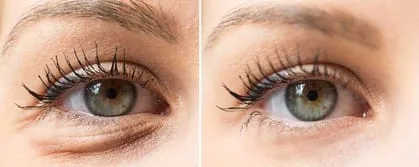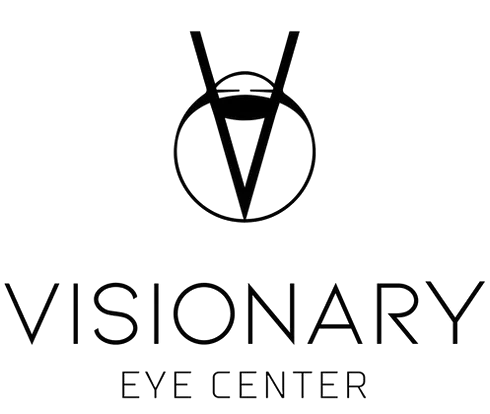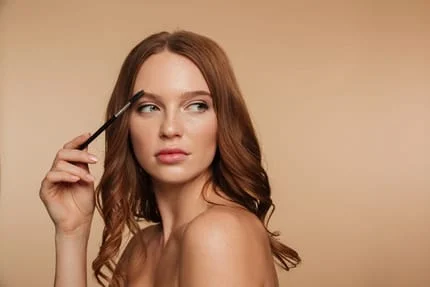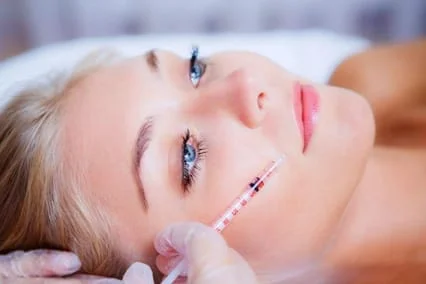
EYE LIFT
As we age, the first place we begin to see changes are the eyes. Wrinkles and puffiness of the upper or lower eyelids can make a person look and feel older than they really are. Thankfully there is a solution
What Is Blepharoplasty?
Blepharoplasty is a kind of surgery performed on the eyelids. It’s done to remove excess skin and swelling from the upper eyelids and reduce bagginess from the lower eyelids. It’s also called an eye lift.
Why Is Blepharoplasty Done?
For middle age adults this surgery is usually done for cosmetic reasons. In older adults it is an effective way to improve sight when the sagging upper eyelids get in the way of their vision when the upper eyelids are involved.
In older adults when the lower eyelids are involved, blepharoplasty is a way to restore the original function and position of the lower eyelids. An eye lift won’t get rid of dark circles under the eyes, crow’s feet, or other facial wrinkles. It’s often done along with other procedures such as laser resurfacing, filler injections, or forehead lifts.

The eyelid aging process
As skin ages, it gradually loses its elasticity. A lack of elasticity plus the constant pull from gravity causes excess skin to collect on the upper and lower eyelids.
Excess skin on the lower eyelid causes wrinkles and bulges. On the upper eyelids, the extra skin can hang over the eyelashes and get in the way of seeing. As the skin and muscle lose their elasticitiy the fat that cushions and protects the eyeball from the surrounding bones can cause bulges in the upper and lower eyelids. The thin membrane that holds the fat in place weakens with age, letting the fat come forward into the lids creating a bulge.
Who Is a Good Candidate For Blepharoplasty?
The ideal candidates for an eye lift are people who are 35 years or older, in good health and who have a realistic idea of what they want. If baggy eyelids or droopy eyelids run in your family, you may decide to have the surgery done sooner.
While eyelid surgery can improve your appearance and help build your confidence, it may not result in your ideal look or alter your facial structure. Think about your goals before you decide to have surgery, and discuss them with your surgeon.

NOSE-CONTOURING
One of the most common surgical procedures to improve ones appearance and self confidence is rhinoplasty aka the “nose job”. Being the center of your face from any angle makes the nose one of the top concerns for both women and men. The nose can change as we age. Being composed primarily of cartilage (the soft support at the tip of your nose), the nose grows as we age. The nose has fat under the skin and as we age we can lose that youthful volume and the nostrils can widen. This contributes to the size and, in many cases, concern that people have.
To solve the problem many people look to nasal surgery to change the shape of the nose and alter the appearance of their face. Primary rhinoplasty is the term given to an operation of the nose that is designed to change or reshape the nose. ‘Primary’ means that it is the first operation ever performed on that nose for those reasons.
The goal of nasal surgery is to improve the appearance of the nose. The operation is performed by elevating the skin from the underlying structures, and then altering the bone and cartilage that makes up the structural aspects of the nose. The skin is then put back down on to the structures and the nose is left to heal.
Every surgeon has their own methods and philosophy behind the way they perform primary rhinoplasty. There are two major approaches to nasal surgery: open and closed. Each approach has its advantage and disadvantage, but for Dr. Golio, the “open” approach is best because the anatomy can be visualized, any of the smallest imperfections can be taken care of, there is virtually no difference in the healing time. Being a fellowship trained Craniofacial Plastic Surgeon, Dr. Golio has dealt with the most difficult reconstructive rhinoplasties and in his experience the open approach gives the best results.
Secondary rhinoplasty is any nose surgery that occurs after having already had nose surgery. These procedures are usually more complicated due to scarring and deformities and will sometimes require taking cartilage from the ribs or using surgical materials to give the best result. No matter which approach or which surgeon you choose, the ultimate goal should be to have a natural result for your gender and ethnicity. Certain results are possible and others are not. Some patients desires are realistic and others are not.
Make sure your surgeon listens to your desired results. The surgeon should then let you know if those results are possible or if they should hold off on doing surgery. Making sure the patient will achieve what they desire with minimal chances of revision surgery is what makes a rhinoplasty operation successful for both the patient and surgeon.

FACE LIFT
A face-lift (rhytidectomy) is a cosmetic surgical procedure to create a younger appearance in your face by returning the the sagging or folds of skin on the cheeks and jawline and other changes in the shape of your face to their original position and removing any excess skin.
During a face-lift, a flap of skin on each side of the face is lifted up and the soft tissue underneath is put back in the original position. When this skin and tissue is pulled back, and tissues below are returned to their original position, the contour and shape of the face is returned to a more youthful shape. Before the flap is sutured closed, excess skin is removed.
A neck lift (platysmaplasty) is often done as part of a face-lift to reduce fat deposits and sagging skin on the neck.
A face-lift won’t decrease fine creases or wrinkles in your skin or damage from sun exposure.

Why it’s done
As you get older, the appearance and shape of your face is altered because of normal age-related changes. Your skin becomes less elastic and sags. The fat deposits decrease in some areas of your face and increase in others. This can cause hollowing out in some areas and bulking up in other areas . Age-related changes in your face that may be reduced with a face-lift include the following:
- Sagging appearance of your cheeks
- Excess skin at your lower jawline (jowls)
- Deepening of the fold of skin from the side of your nose to the corner of your mouth
- Sagging skin and excess fat in the neck (if the procedure includes a neck lift)
A face-lift isn’t a treatment for superficial wrinkles, sun damage, creases around the nose and upper lip, or irregularities in skin color.
A traditional face-lift incision starts at your temples in the hairline, continues down and around the front of your ears and ends behind your ears in your lower scalp. An incision might be made under your chin to improve the appearance of your neck.
There are other types of incisions. A limited incision is a shorter incision that begins in your hairline just above your ear, wraps around the front of your ear, but does not extend all the way into the lower scalp.
Neck lift incision starts in front of your earlobe and continues around your ear into your lower scalp. A small incision also is made under your chin.
A face-lift generally takes two to four hours but might take longer if other cosmetic procedures are done at the same time.
Always discuss with your surgeon what your expectations are and what is possible based on you examination with the doctor.
With any surgery there are risks and no guarantees.
While rare in the hands of an experienced surgeon, a face-lift surgery can cause complications. Most complications are minor and can be managed with appropriate care, medication or surgical correction. Long-term or permanent complications, while rare, can cause significant changes in appearance.
Like any other type of major surgery, a face-lift poses a risk of bleeding, infection and an adverse reaction to anesthesia. Certain medical conditions or lifestyle habits also can increase your risk of complications. The following factors may present a significant risk or result in unfavorable results, and your doctor may advise against a face-lift.
Always be truthful with your surgeon about your medical conditions to make sure that everything goes as well as possible.
BROW LIFT
A brow lift is also known as a forehead lift or forehead rhytidectomy. As a person and gravity causes the forehead and eyebrows to sag. In an effort to keep our eyes open, people raise their forehead up so see better. This causes deep wrinkles in the forehead. Brow lift returns the forehead to its natural position and reduces the wrinkle lines that develop horizontally across the forehead, as well as those that occur on the bridge of the nose, between the eyes. It also improves frown lines, the vertical creases that develop between the eyebrows and lessens the droopiness of the upper eyelids. Most patients who get a forehead lift complain about sagging within 5 years or complain that they always look “startled”. Dr. Golio developed a technique that lets your results last decades without looking scared!
Is Brow Lift Surgery?
A forehead lift, also commonly referred to as a brow lift, rejuvenates the face above the eyes to restore a more refreshed appearance to the upper third of the face. By resuspending the underlying muscles and tissues and removing excess sagging, skin on the forehead , a brow lift can correct a heavy, sagging brow, eliminate deep furrows, and restore a smoother, more youthful contour to the forehead.
Why Have a Brow Lift?
Gravity, over time, pulls down the soft tissue above the eyes. A sagging, heavily wrinkled brow makes us look constantly tired, worried or even angry. Some of us are also genetically inclined to have a heavier, thicker brow, making us look as though we are wearing a frown even when we are feeling our best. A brow lift directly addresses these issues, helping patients enjoy a more naturally refreshed appearance as well as other positive changes:
Others may find you more approachable, as they no longer mistakenly perceive you as angry or concerned
Your eyes will appear brighter and more naturally alert
Self-confidence can improve as you are no longer worried about looking “worried”
Types of Brow Lift Surgery
Cosmetic surgeons use different techniques for brow lift surgery; which is best for any given patient depends on a patient’s goals, unique anatomy, and the extent of corrections needed to achieve the desired results. There are three types of brow lifts.
Endoscopic Brow Lift
Increasingly, cosmetic surgeons are using the endoscopic method for brow lift surgery, which is much less invasive than previous techniques, yet can often achieve an equally desirable result. For an endoscopic brow lift, your cosmetic surgeon will make a series of very short incisions (about ¾” in length) just behind the hairline. Then, using a special tiny camera and thin instruments, he or she will reposition the muscles and lift underlying tissues of the forehead, removing excess fat and tissue as needed to create a naturally more youthful brow.
Classic or Coronal Brow Lift
Once the standard technique, the coronal brow lift has generally fallen out of fashion, as well-qualified cosmetic surgeons are typically able to make needed improvements with less invasive techniques. In certain cases, however, a coronal brow lift may be necessary to achieve a patient’s desired results. This technique involves one long incision made behind the hairline, running from ear to ear. Excess skin, fat and tissue are removed and the remaining skin and brow muscles are repositioned into a more youthful appearance.
Temporal or Limited Incision Brow Lift
A temporal brow lift involves slightly longer incisions than an endoscopic brow lift and is most commonly performed in conjunction with eyelid surgery. Incisions about 1 inch long are made just above each temple, behind the hairline. Through these incisions, your cosmetic surgeon will lift and reposition the tissues of the outer brow area.
Brow Lift Surgery & Recovery
Brow lift surgery is an outpatient procedure, performed using general anesthesia or intravenous sedation with local anesthesia. The duration of surgery depends on the type of brow lift as well as whether or not another procedure is being performed at the same time. Your incisions may be closed with sutures or staples, which are typically removed about 1 week after surgery.
Patients typically experience very little pain after a brow lift, but it is common to feel slight discomfort as well as a sensation of tightness throughout the forehead. Swelling and bruising are most common during the first 10 days or so after surgery, and are mostly resolved after about 2 weeks.
The timeline for resuming activity after a brow lift depends on the individual—if you are having a brow lift alone, recovery is usually much quicker than that for a patient having a brow lift in conjunction with a facelift or other more extensive procedure.
INJECTIBLES
Are Botox®, Dysport, and Xeomin safe?
Mayo Clinic deems BOTOX® injections as a “relatively safe treatment when performed by an experienced provider.” Like other treatments, there is always the risk of side effects or complications, but our trained providers take extra care when treating patients.
During your treatment, patients feel minimal discomfort from the tiny injection needles used. Providers can also apply topical numbing or ice if the patient prefers.
How long does BOTOX®, Dysport or Xeomin last?
The lasting effects of BOTOX®, Dysport, and Xeomin are dependent on many factors. The dosage amount and even the patients’ metabolism can play a major role in the lasting effects. For most patients, we see results last between 3 to 5 months. Patients will slowly return to the treated areas.
How should I prepare before getting Botox, Dysport, or Xeomin?
Preparation can begin the week before your treatment. If you currently take any medications or supplements that can thin your blood, it is suggested to stop taking these the week before. This is to minimize the bruising from injection areas. Some Medications to avoid include:
- Asprin
- Ibuprofen
- Ginseng
- Fish Oil
- St. John’s Wort
- Vitamin E
- Ginkgo Biloba
We also highly suggest not drinking alcohol (wine, beer, liquor, or that happy hour margarita) one to two days prior to your appointment. Avoiding alcohol prior to injections can minimize bruising and prove your recovery speed!
Where can I get injections on my face?
BOTOX®, Dysport, and Xeomin are usually injected in the upper areas of the face. Patient’s may also get injections in other areas of the face, underarms (for excessive sweating), and neck areas (neck and jawline rejuvenation).
What should avoid after getting injections?
To increase effectiveness and minimize downtime please be sure to avoid:
- Rubbing your face, especially around injection areas
- Lying on your face or applying pressure to your face
- Strenuous exercise (it’s okay to take the day off!)
- Alcohol
- Blood thinners (check out this list on WebMD)
- Washing your face
- Heat and the sun
If you have any questions or concerns prior to or after your treatment, please be sure to call the office!
FILLERS
Most of the procedures are performed in less than an hour with virtually no down time yielding instant results. Dermal fillers are used to increase facial volume, contour facial features, and smooth facial lines and wrinkles by replenishing the natural collagen support layer beneath your skin. Many of our fillers can also be used to enhance the lips and improve the appearance of fine lines around the lips.
Restylane Dermal Fillers
Most of the procedures are performed in less than an hour with virtually no down time yielding instant results. Dermal fillers are used to increase facial volume, contour facial features, and smooth facial lines and wrinkles by replenishing the natural collagen support layer beneath your skin. Many of our fillers can also be used to enhance the lips and improve the appearance of fine lines around the lips and our Certified Nurse Injectors provide a full facial assessment to determine which is right for you.
Juvederm Dermal Fillers
Most of the procedures are performed in less than an hour with virtually no down time yielding instant results. Dermal fillers are used to increase facial volume, contour facial features, and smooth facial lines and wrinkles by replenishing the natural collagen support layer beneath your skin. Many of our fillers can also be used to enhance the lips and improve the appearance of fine lines around the lips and our Certified Nurse Injectors provide a full facial assessment to determine which is right for you.
Are Dermal Fillers safe?
Dermal fillers are a much safer alternative to surgery when it comes to their versatility and effectiveness in addressing aging in the face.
If you experience any side effects, contact us or a medical professional
Do Dermal Fillers hurt?
There is minimal pain during treatment, but providers can provide and apply a topical anesthetic cream to planned injection areas to further minimize discomfort.




